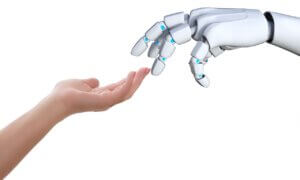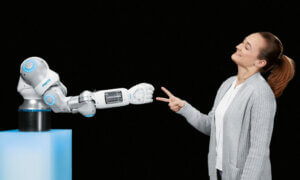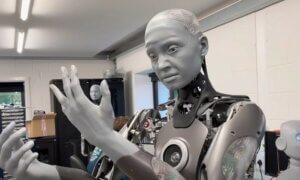When we imagine the future of space exploration, we usually imagine humanoid robots that will accompany us across the deserted planes of distant planets but soft robotics has been gaining a lot of traction in the past couple of years and, if you really think about it, it definitely makes more sense.
Hard robots require complex machinery to be put together, which raises the production costs and are usually difficult and time-consuming to fix when they break, especially if the robot it autonomous and goes exploring far away from its human peers.
Harvard researchers want to keep it simple instead: they developed a soft robot that uses pressurized air to do its thing. This replaces the multiple control systems usually found on hard robots and overall reduces the complexity of the components you’d normally need to power up such a machine.
The robot was developed by researchers from the Harvard John A. Paulson School of Engineering and Applied Sciences (SEAS) and their research was published in the Soft Robotics journal.
“Before this research, we couldn’t build fluidic soft robots without independently controlling each actuator through separate input lines and pressure supplies and a complex actuation process,” Nikolaos Vasis said, graduate SEAS student and co-author of the paper “Now, we can embed the functionality of fluidic soft robots in their design, allowing for a substantial simplification in their actuation.”
The researchers selected tubes of different sizes that helped them control the speed of the air that goes through the machine.
While an input sends out the same amount of air through the tubes, the size is the one that decides how the air flows and where.
The team demonstrated their approach on a four-legged soft robot, with the tubes sending air into each leg in sequence, which enabled it to crawl in a very organic-looking manner.
“Our work presents for the first time a strategy that can be used to make simply actuated fluidic soft robots, based on this well-known phenomenon of viscous flow,” Katia Bertoldi, Professor of Applied Mechanics at SEAS said “With the strategy presented in our work, the actuation of fluidic soft robots will now be simpler and easier than ever, taking a major step towards fully untethered and simply actuated soft robots.”
The researchers hope these sort of soft robots could prove to be more practical than their metal-made siblings as they don’t need to be tethered and can scramble over tough terrain more easily. They expect to see the robots perhaps aid space exploration and search and rescue missions in the future.
Follow TechTheLead on Google News to get the news first.



















